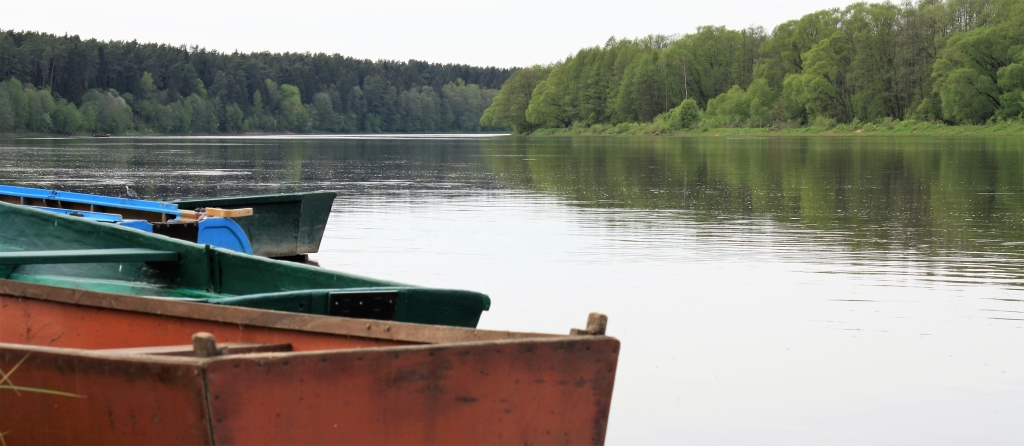Yearly, tons of nitrate and phosphorus enter the Baltic Sea. The large catchment areas are the main sources of such nutrient inputs. With its high density of population, immense agriculture and industry production as well as inadequate household wastewater treatment the southern part of the Baltic Sea catchment area clearly stands out as the main contributor of hazardous substances. In such areas water bodies like rivers play a crucial role.
The Neman/Nemunas River is the 14thlargest in Europe and the fourth largest in the Baltic Sea basin. It originates near Minsk and drains into the Curonian Lagoon and ultimately into the Baltic Sea. Around 940 kilometers long, the river basin of the Neman stretches across four countries, namely Poland, Russia (Kaliningrad Oblast), Lithuania and Belorussia. The Neman River, as a transboundary upstream river that originates in a non- EU-Country, is lacking an efficient cross-border water basin management. Though there are many attempts to find a common approach, river basin management is organized differently in EU and non-EU states. It is a fact, however, that transboundary upstream rivers, who originate in non-EU countries, discharge high amounts of nutrients to the Baltic Sea and thus, shared activities, associated with the reduction of nitrate and phosphorus, are urgently required. Jointly with the Daugava River and the Vistula River, the Neman River makes up one third of all nutrient load to the Baltic Sea. The Neman River belongs to a complex hydraulic system, one has to take into account when estimating the general nutrient load and designating its actual sources.
Of course, the Neman also has some alarming environmental features of its own such as the necessity to protect migratory fish species (e.g. salmon). In order to guarantee that salmon fishes reach their spawning area and maintain their population, it is essential to carry out anti-pouching-activities, but also maintain or restore spawning grounds in the countries that share the Neman river basin. As of fishery, bird bycatch constitutes another severe issue brought about by wrong fishing techniques, namely in the Curonian Lagoon. A further problem, yet to be analyzed in the Baltic Sea region, is the dimension of marine litter (e.g. micro-plastics) caused or made worse by rivers. According to UNEP, riverine input contribute up to 80 % of all litter inputs to oceans. Many organizations are concerned about the upstream sources of litter, and therefore plan activities to tackle reduction of littering in river basins in the Baltic Sea Region.
The Baltic Sea Conservation Foundation learned about the complex situation through field visits and events. In December 2016, managing director Peter Torkler, participated in an informative and well-attended workshop of the Coalition Clean Baltic (CCB) and the Michael Succow Foundation (MSS) in Kaliningrad that was entitled “Improving Water Quality in the Neman Catchment Area through Rewetting, Wise Wetland and River Basin Management”. In the context of a more recent field trip to Lithuania in May 2017, Mr. Torkler presented the Baltic Sea Conservation Foundation at the Ministry of Environment and met with several environmental Non-Profit-Organizations.
It is evident that the local civil society holds the key for improving the water quality of the Neman River, the Curonian Lagoon and the Baltic Sea.
Therefore, we are glad that, following our activities and expanding networks, two new NGO-directed projects could begin in July 2017 taking a closer look at specific problems in relation to the Neman catchment area.
The Kultūros centras “In Actio” based in Vilnius will be doing a yearlong initiative in the Neman river basin headlined “The reduction of the pollution of the Baltic Sea and the protection of migrating salmon”. BirdLife International is collaborating with the Lithuanian Ornithological Society (LOD) on behalf of the problem of bird bycatch. The project is called “Untangling the net: tackling bird bycatch in Baltic gillnet fisheries” and will be carried out in the Curonian Lagoon for three years. We will add detailed information about both projects soon.
We hope that more important work around the Neman catchment area can be initiated in the future
Currently baltcf supports 11 projects around the whole Baltic Sea catchment area with projects in Russia, Sweden, Poland and Lithuania. We are glad to start working in Lithuania and expect a number of new projects to start by the end of 2017.
